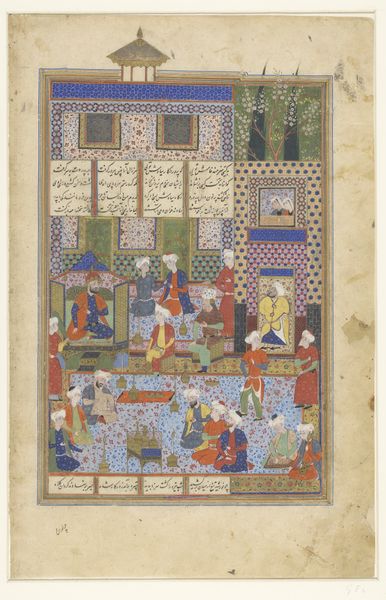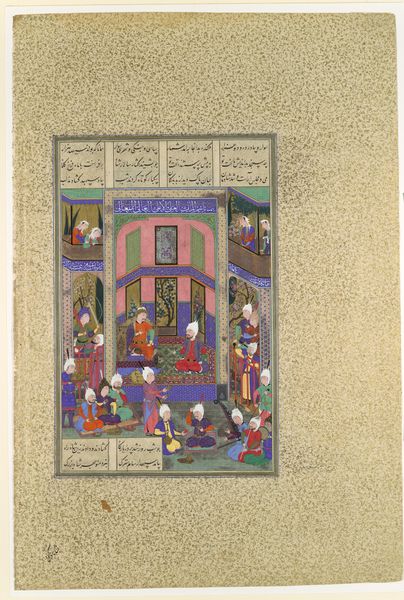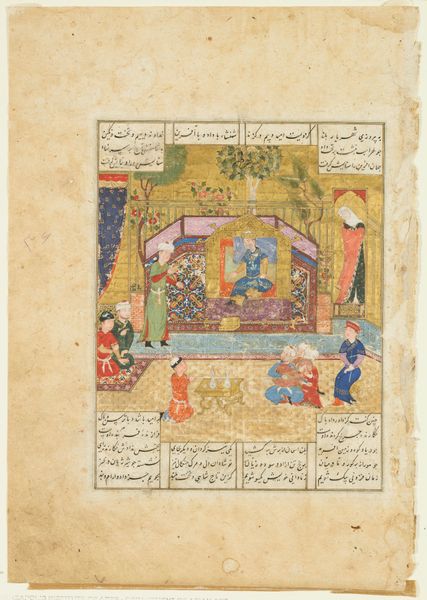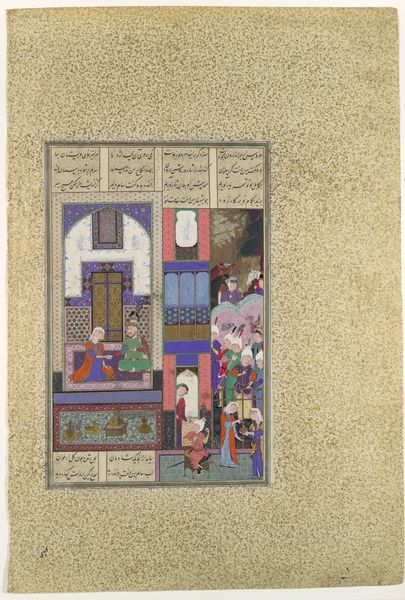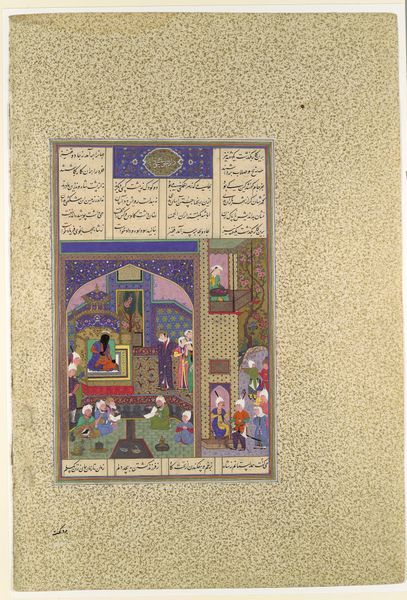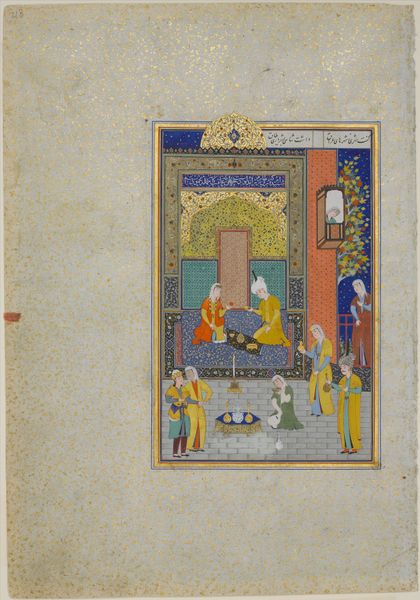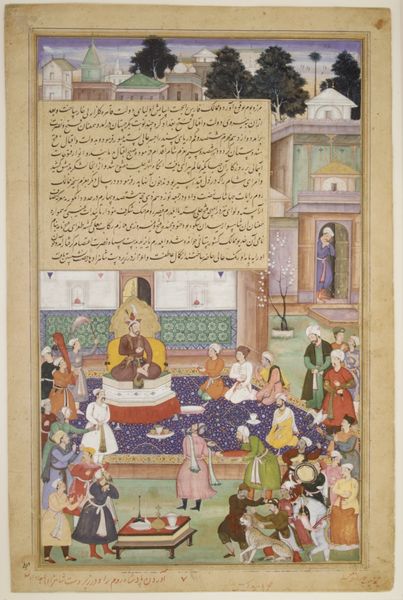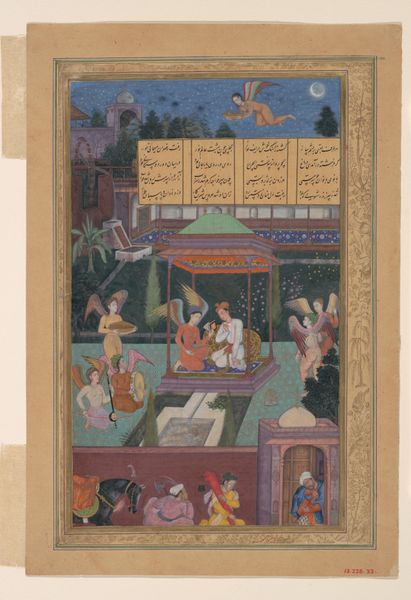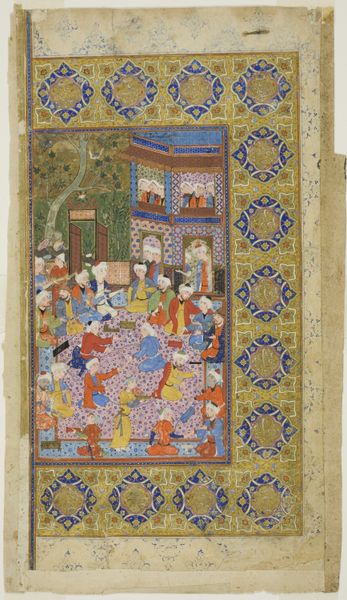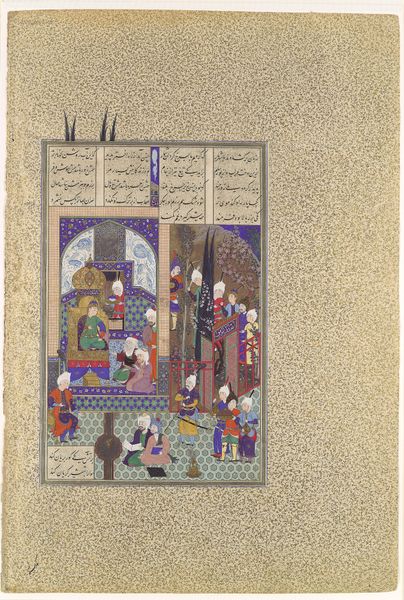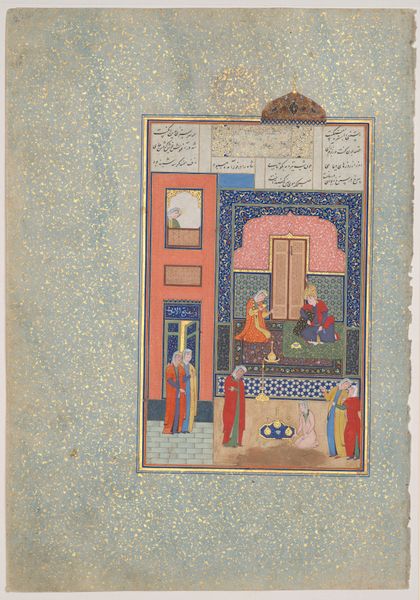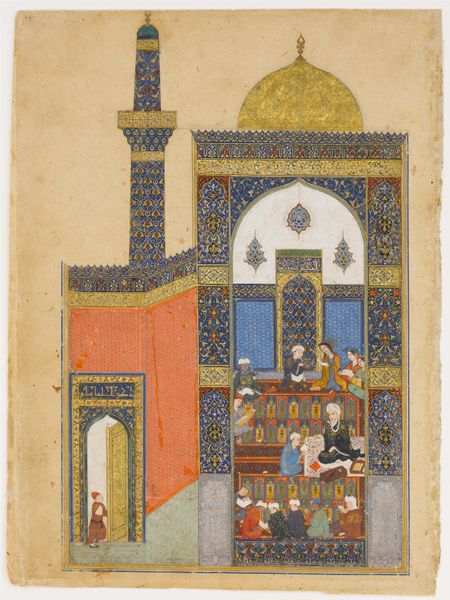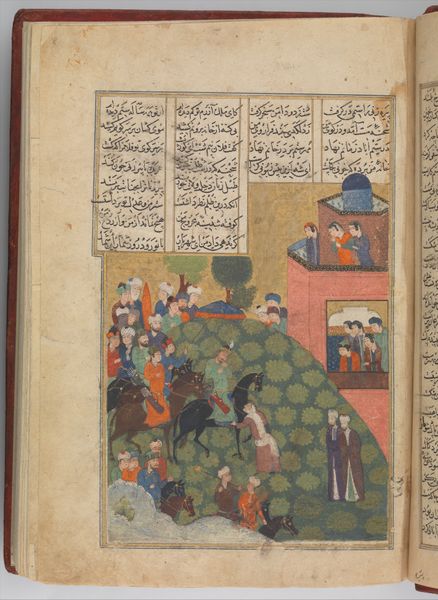
"The Assassination of Khusrau Parviz", Folio 742v from the Shahnama (Book of Kings) of Shah Tahmasp 1510 - 1560
0:00
0:00
painting, watercolor
#
water colours
#
narrative-art
#
painting
#
figuration
#
watercolor
#
men
#
islamic-art
#
history-painting
#
miniature
Dimensions: Painting: H. 11 3/16 in. (28.4 cm) W. 10 3/4 in. (27.3 cm) Page: H. 18 1/2 in. (47 cm) W.12 1/2 in. (31.8 cm) Mat: H. 22 in. (55.9 cm) W. 16 in. (40.6 cm) Frame: H. 23 in. (58.4 cm) W. 17 in. (43.2 cm)
Copyright: Public Domain
Curator: What a flurry of activity and intense color. I’m immediately struck by the contrast between the cool blues and greens against that stark central red. It's "The Assassination of Khusrau Parviz", from the Shahnama of Shah Tahmasp, created sometime between 1510 and 1560. Editor: Right, a complex stage upon which a truly vile act unfolds. I'm taken with how even this story of regicide becomes a theater of power, carefully ornamented with tilework and levels of social distance. All those watchers, all that artifice… the symbol seems to scream 'tyranny' at every level. Curator: That's precisely it. Islamic miniatures often depict historical or mythical narratives. But beyond this story—part of the larger "Book of Kings"—I see here how it serves as a warning. A cautionary symbol. This meticulous water-colour on paper holds a potent story about the fall of kings and a society eating itself alive, don’t you think? Editor: Definitely. That intricate detail, the layers, even the script bordering the illustration - it all points to the heavy weight of history and divine right, both claimed and violently taken. The layering creates this feeling of lives interconnected but segregated. The patterns themselves start speaking; an echo of something deeper in the Persian consciousness. It's visual poetry...or maybe, visual mourning. Curator: It does bring us to a deeper reflection, indeed! Looking at the artwork, knowing the story behind the layers of colors and complex arrangements, it becomes almost autobiographical on the very nature of leadership and fate itself, even. What do you think about it today? Editor: Now I am reminded that beauty, like the violence shown, exists inside a framework. Looking closer, each element reveals hidden dimensions. What at first sight might seem to be no more than historical chronicle opens itself, just a bit, to suggest truths bigger than the frame. Curator: I think you’ve said it well, offering so many different perspectives from only an illustration on paper… a single window, after all, within an enormous book. Thank you. Editor: And thank you. Until next time, perhaps the art will tell another story.
Comments
No comments
Be the first to comment and join the conversation on the ultimate creative platform.
